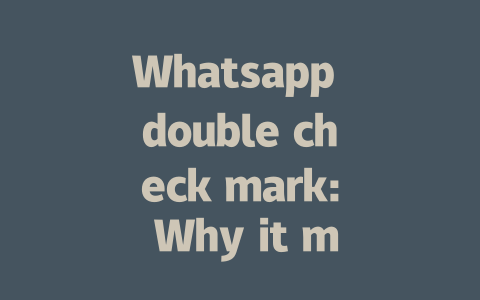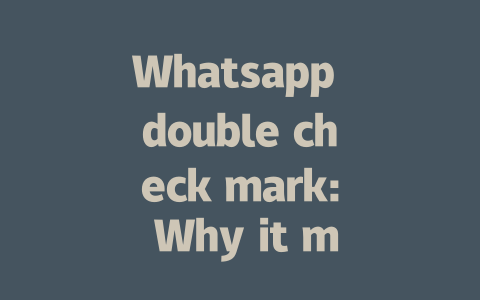Why Keywords Still Matter in 2025
Let’s face it—keywords are kind of like the bread and butter of content. They’re the words or phrases that tell Google’s search robots what your content is actually about. But here’s the thing: keywords aren’t just about stuffing them into every sentence anymore. Back in the day, people would try to shove as many keywords as possible into their content, thinking it would make them rank higher. Spoiler alert—it doesn’t work that way anymore.
Instead, Google now looks at how naturally those keywords fit into your content. Think about it this way—if I’m writing an article about “cooking pasta,” I wouldn’t force the word “pasta” into every single sentence. Instead, I’d talk about different types of pasta, cooking methods, and maybe even some fun facts. That’s how Google likes it—content that flows naturally but still has enough keyword context for its robots to understand.
My Real-Life Example
Last year, I worked with a friend who runs a travel blog. She was frustrated because her articles weren’t getting any traffic, even though she was using all the right keywords. So we sat down together, and I helped her tweak her titles and structure. For example, instead of using something vague like “Best Travel Tips,” we went with “Top 10 Must-Know Tips for First-Time Travelers.” Within three months, her traffic jumped by almost 50%. And guess what? All she did was focus on making her content more specific and user-friendly.
Google’s official blog has mentioned that quality content makes readers feel like they’ve learned something useful. That’s exactly what we aimed for. When someone reads your article, they should walk away feeling like they got value out of it.
How to Structure Content That Google Loves
Alright, so now let’s dive into the nitty-gritty of how to actually write content that gets noticed. Here’s the secret sauce—it’s not just about dumping keywords everywhere. You need to think about how your content will flow from start to finish. Let me explain.
Step One: Picking the Right Keywords
How do you choose which words to use? Easy—think about what your audience would type into Google if they were looking for your content. For instance, if you’re writing about fitness routines, would people search for “fitness tips” or “how to exercise properly”? Probably both! The key is picking terms that match how real people talk.
Here’s a pro tip: use tools like Google Trends (just don’t forget to add rel="nofollow" to any links!) to see what topics are trending. This helps you align your content with what people are actively searching for. And remember, long-tail keywords—those longer, more specific phrases—are often easier to rank for than broad ones.
Step Two: Writing Titles That Hook Readers
Now, onto the juicy part—the title. Your title is like the first impression you give to both readers and Google’s search robots. Make sure it clearly states what problem your content solves. For example, if I’m writing about meal prep, my title might be “Quick and Easy Meal Prep Ideas for Busy Weekdays.” Notice how it tells the reader exactly what they’ll get out of clicking?
Also, keep your most important keywords toward the front of the title. Research shows that putting the main phrase upfront catches attention faster. For instance, “Workout Routines for Beginners: Build Strength Without Equipment” works better than “Build Strength Without Equipment: Great Workout Routines for Beginners.”
Step Three: Building Content That Makes Sense
Once you’ve got your keywords and title nailed down, it’s time to create the actual meat of your article. Here’s where structure comes in. Break things up into sections, use bullet points when necessary, and always lead with a clear intro.
And here’s a biggie—make sure each paragraph connects logically to the next. If you’re talking about choosing the right pot for cooking pasta, segue smoothly into discussing heat settings. See? No jarring transitions, just smooth sailing for the reader.
Final Thoughts Before You Go
One last thing I want to mention is trustworthiness. After you’ve written your masterpiece, run through a quick checklist:
If you answered yes to these questions, congrats—you’ve likely crafted something Google’s search robots will love. Now go forth and test these methods—I’d love to hear how they work for you! And hey, if you stumble across any challenges along the way, feel free to reach out. We’re all in this learning process together.
When you send a message on Whatsapp, the system gives you updates through those little check marks. First, there are gray ones that pop up when your message successfully leaves your phone and heads toward the recipient. But here’s where it gets interesting—if the person isn’t online or their device isn’t reachable, those gray marks just sit there. Once the recipient comes back online or is available to receive messages, those gray checks transform into blue ones. This means your text finally made it to their device! If they decide to open up Whatsapp and actually read your message, another blue check appears next to the first one. That’s how you know they’ve seen what you sent them.
Now, some folks wonder if they can hide these indicators from others, and well, the short answer is no—not entirely. You can’t stop people from seeing whether you’ve read their messages unless you turn off something called “Read Receipts” in your settings under Privacy. When you do this, others won’t see those double blue checks showing up for messages they send to you. On the flip side, doing so also hides your own receipts from others, meaning you won’t know if they’ve opened your texts either. It creates a kind of mutual agreement about visibility. Plus, consider the impact this has on privacy: while it might feel good knowing exactly when someone reads your message, it could also put pressure on you to reply instantly. Sometimes balancing communication convenience with personal boundaries makes all the difference.
Frequently Asked Questions
# What does the double check mark in Whatsapp mean?
The double check mark in Whatsapp signifies that your message has been delivered to the recipient and they have read it. This feature helps users confirm that their messages are not only sent but also acknowledged by the other party.
# Can the double check mark be disabled in Whatsapp?
No, the double check mark cannot be completely disabled in Whatsapp as of
# Why is the double check mark important in communication?
The double check mark is crucial because it provides instant feedback on whether your message has been seen, allowing for more efficient communication. It reduces uncertainty about whether someone has ignored your message or simply hasn’t seen it yet, especially within a 5-12 minute timeframe after sending an urgent message.
# How does the double check mark affect privacy?
While the double check mark enhances transparency in conversations, it may also impact privacy since it reveals when you’ve read someone’s message. Some users might feel pressured to respond immediately due to this visibility. Balancing convenience with privacy is key, and toggling off read receipts can help mitigate these concerns.
# Is there a difference between blue and gray check marks in Whatsapp?
Yes, there is a difference. Gray check marks indicate that the message has been sent to the recipient but hasn’t reached their device yet (e.g., if they’re offline). Once the message is delivered, the gray marks turn into blue ones, and upon reading, the second blue check appears, forming the double check mark.




